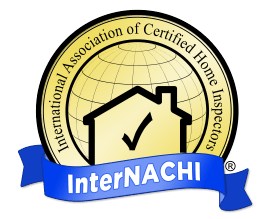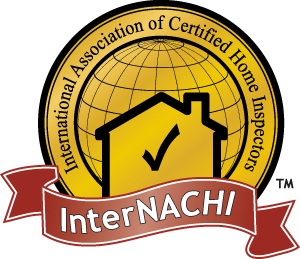Household Hazard
This list of terms covers most of the common household dangers likely to be encountered by inspectors. algae: microorganisms that may grow to colonies in damp environments, including certain rooftops. They can discolor shingles; often described as “fungus.” alligatoring: a condition of paint or aged asphalt brought about by the loss of volatile oils, and
This list of terms covers most of the common household dangers likely to be encountered by inspectors.
- algae: microorganisms that may grow to colonies in damp environments, including certain rooftops. They can discolor shingles; often described as "fungus."
- alligatoring: a condition of paint or aged asphalt brought about by the loss of volatile oils, and the oxidation caused by solar radiation; causes a coarse, "checking" pattern characterized by slipping of the new paint coating over the old coating to the extent that the old coating can be seen through the fissures. "Alligatoring" produces a pattern of cracks resembling an alligator hide, and is ultimately the result of the limited tolerance of paint or asphalt to thermal expansion and contraction.
- asbestos: a common form of magnesium silicate which was commonly used in various construction products because of its stability and resistance to fire. Asbestos exposure, caused by inhaling loose asbestos fibers, is associated with various forms of lung disease. Asbestos is the name given to certain inorganic minerals when they occur in fibrous form. Though fire-resistant, its extremely fine fibers are easily inhaled, and exposure to them over a period of years has been linked to cancers of the lung and the lung-cavity lining, and to asbestosis, a severe lung impairment. Asbestos is a naturally occurring mineral fiber sometimes found in older homes. It is hazardous to your health when a possibility exists of exposure to inhalable fibers. Homeowners should be alert for friable (readily crumbled or brittle) asbestos, and always seek professional advice in dealing with it.
- bleeding: the migration of a liquid to the surface of a component or into/onto an adjacent material.
blister: an enclosed, raised spot evident on the surface of a building. They are mainly caused by the expansion of trapped air, water vapor, moisture or other gases. - blue stain: a bluish or grayish discoloration of the sapwood caused the growth of certain mold-like fungi on the surface and in the interior of a piece, made possible by the same conditions that favor the growth of other fungi.
bubbling: in glazing, open or closed pockets in a sealant caused by the release, production or expansion of gasses.
buckling: the bending of a building material as a result of wear and tear, or contact with a substance such as water.
carbon monoxide (CO): a colorless, odorless, highly poisonous gas formed by the incomplete combustion of carbon.
cohesive failure: internal splitting of a compound resulting from over-stressing of the compound.
condensation: water condensing on walls, ceiling and pipes; normal in areas of high humidity, usually controlled by ventilation or a dehumidifier. - corrosion: the deterioration of metal by chemical or electrochemical reaction resulting from exposure to weathering, moisture, chemicals and other agents and media.
- crater: pit in the surface of concrete resulting from cracking of the mortar due to expansive forces associated with a particle of unsound aggregate or a contaminating material, such as wood or glass.
- crazing: a series of hairline cracks in the surface of weathered materials, having a web-like appearance; also, hairline cracks in pre-finished metals caused by bending or forming; see brake metal.
- cupping: a type of warping that causes boards to curl up at their edges.
- damp-proofing: a process used on concrete, masonry and stone surfaces to repel water, the main purpose of which is to prevent the coated surface from absorbing rainwater while still permitting moisture vapor to escape from the structure. Moisture vapor readily penetrates coatings of this type. Damp-proofing generally applies to surfaces above grade; waterproofing generally applies to surfaces below grade.
- decay: disintegration of wood and other substances through the action of fungi.
distortion: alteration of viewed images caused by variations in glass flatness or in homogeneous portions within the glass; an inherent characteristic of heat-treated glass. - drippage: bitumen material that drips through roof deck joints, or over the edge of a roof deck.
dry rot: see fungal wood rot. - feathering strips: tapered wood filler strips placed along the butt edges of old wood shingles to create a level surface when re-roofing over existing wood shingle roofs; aso called "horsefeathers."
- fungal wood rot: a common wood-destroying organism which develops when wood-containing material is exposed to moisture and poor air circulation for a long period of time (six-plus months); often and incorrectly referred to as "dry rot."
- fungi (wood): microscopic plants that live in damp wood and cause mold, stain and decay.
- incompatibility: descriptive of two or more materials which are not suitable to be used together.
- lead-based paint: Lead is a highly toxic metal that was used for many years in products found in and around homes. Lead may cause a range of health problems, from behavioral problems and learning disabilities, to seizures and death. Children age 6 and under are most at risk because their bodies are growing quickly.
- migration: spreading or creeping of a constituent of a compound onto/into adjacent surfaces; see bleeding.
- mud cracks: cracks developing from the normal shrinkage of an emulsion coating when applied too heavily.
- mushroom: an unacceptable occurrence when the top of a caisson concrete pier spreads out and hardens to become wider than the foundation's wall thickness.
- photo-oxidation: oxidation caused by rays of the sun.
- ponding: a condition where water stands on a roof for prolonged periods due to poor drainage and/or deflection of the deck.
- pop-out: see stucco pop-out.
- radon: a naturally-occurring, radioactive gas which is heavier than air and is common in many parts of the country. Radon gas exposure is associated with lung cancer. Mitigation measures may involve crawlspace and basement venting and various forms of vapor barriers.
- scrap out: the removal of all drywall material and debris after the home is "hung out" (installed) with drywall.
- seasoning: removing moisture from green wood in order to improve its serviceability.
- settlement: shifts in a structure, usually caused by freeze-thaw cycles underground.
- sludge: term for the waste material found in sump pump pits, septic systems and gutters.
- spalling: the chipping and flaking of concrete, bricks and other masonry where improper drainage and venting and freeze/thaw cycling exists.
- splitting: the formation of long cracks completely through a membrane. Splits are frequently associated with lack of allowance for expansion stresses. They can also be a result of deck deflection and a change in deck direction.
- ultraviolet degradation: a reduction in certain performance limits caused by exposure to ultraviolet light.
- UV rays: ultraviolet rays from the sun.
- veining: in roofing, the characteristic lines or "stretch marks" which develop during the aging process of soft bitumens.
- warping: any distortion in a material.
- water vapor: moisture existing as a gas in air.
AllMax Home inspectors are trained in detecting these and other common household dangers.









